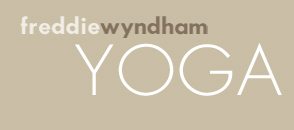  |
|







|
Dhyana (meditation)In his Yoga Sutras, Patanjali outlines eight limbs of yoga. The last 4 limbs, Pratyahara, Dharana, Dhyana and Samadhi outline the steps of meditation. Pratyahara is turning or drawing our attention within, away from distractions and the senses. Dharana means concentration, and refers to the practice or art of focusing the attention on one thing, without necessarily considering any particular duration. Dhyana means meditation and can be interpreted as an unbroken awareness, or experience, of the object of meditation, thus referring to a continuous and steady flow of concentration, as if we were on a raft on a river flowing with the current. The last stage, Samadhi, is a state of total and complete immersion, or merging with the object of meditation to the extent that you lose any sense of separateness from, or any sense of identity separate from the object of meditation. You experience yourself as one with, or in unity with, the object of meditation.I my humble opinion, the ultimate meditation is becoming so still and quiet that we perceive and become immersed in an unbroken experience of our pure consciousness, the Heart or Soul, the nature of which is eternal, infinite and boundless love, joy, truth, peace, light, compassion and goodness. One step beyond that is to perceive and finally merge with, or into, the eternal, infinite and boundless Ocean of love, joy, truth, peace, light and goodness that the wave of our Soul arises out of. Our Souls being a wave on that Ocean are one with, made of, and share the qualities, or attributes of the Ocean. Being one with the Ocean, when we experience ourselves as the wave, we automatically experience and know the Ocean. This may seem like a simple description, and it is. Because our true nature is already the Soul, and we are already, and always one with the Ocean of Godís blessed, loving presence. The hard part is becoming still and quiet enough to recognize and experience our pure consciousness beyond the mind and feelings. And then to learn how to surrender into that experience enough to achieve Dhyana — to become established in an unbroken experience or awareness of our pure consciousness, and ultimately merging into God. The breath is a steppingstone to the deeper experiences of meditation. When we can become established in Dhyana with the breath, we are necessarily liberated from distractions, and begin to experience a deep and profound stillness and silence, which are qualities of our pure consciousness. That stillness and silence is a portal through which we may move into the experience of the love, joy, truth, peace, light, compassion and goodness of the Heart or Soul, in other words, through which we may experience our Heart or Soul, the pure and true nature of our being. Experiencing a glimpse of one or more of the qualities of our pure consciousness is a major step in our meditation practice, because then we know what weíre looking for, what the experience of our pure consciousness is like. Before we recognize it we may have actually been experiencing it but werenít aware of it. Itís such a subtle experience that sometimes we overlook it expecting something bigger, or more dramatic. We have to settle down enough, become still and quiet enough to perceive it. But once we do experience it we discover that it is amazingly dramatic because itís so joyful, so vast and boundless — omnipresent. [ To Top ] |